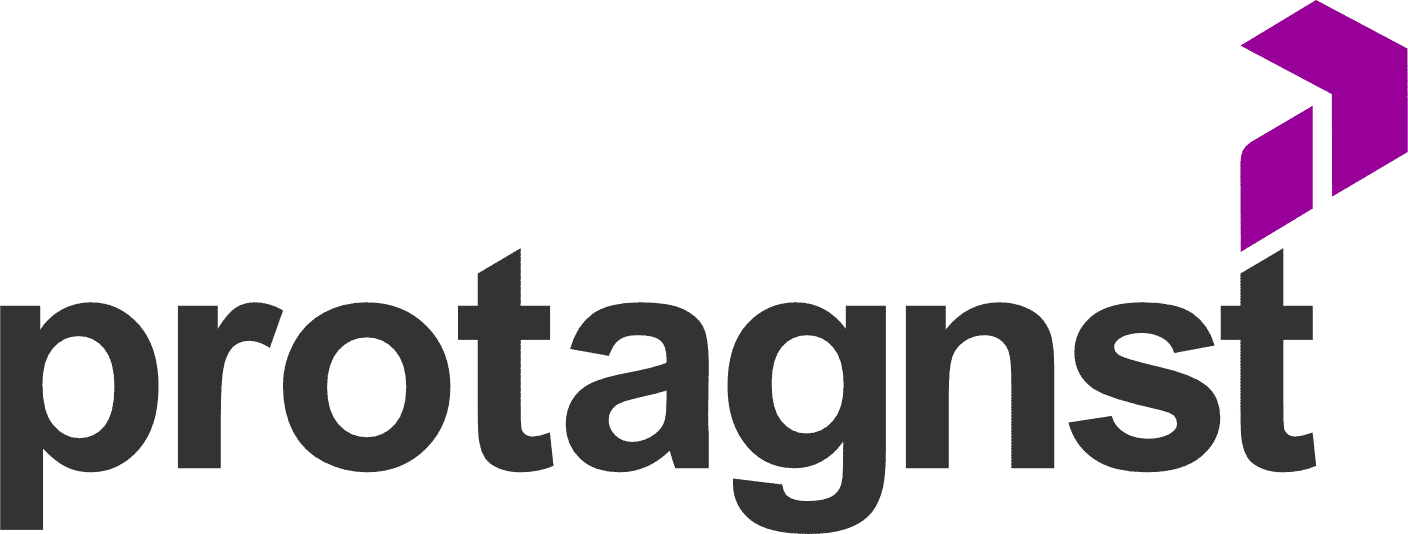Are you related in any way to the business world and have never heard of predictable revenue? It’s time to change this scenario!
Anyone who undertakes or manages a business knows how important it is to have financial control.
In addition to cash flow and monthly expenses, being aware of how much the company will earn over the year helps to devise medium and long-term strategies, such as sales growth, business expansion, increase in physical capital and so on.
This is only possible when the income you have is consistent with what you have projected. In other words, this is only possible with predictable income.
Because predictable recipe is precisely the name of a method – and, because of it, also of a book – developed in 2002 by an engineer in the United States. At the time, Aaron Ross took the sales team of a large CRM company and turned it into a global giant.
The model allows the manager to more reliably project future sales. And this happens because it is something that has already been tested and can be replicated. So the tendency is that what worked once will work again. That is, you already have a notion of the return that it brings.
This article is not intended to be a summary of the book, nor a guide to implement the model. It sets out to present the core concepts and also help you understand how to get the most out of the methodology.
The idea is to understand the bases and, who knows, serve as a start to implement in your company. Let’s go?
Mapa do Conteúdo:
TogglePredictable income: what is it?
Predictable Revenue is a sales methodology that aims at both increasing a company’s commercial capacity and, as the name suggests, helping to predict how much the company will earn at the end of the year, very close to reality.
Unfortunately, it is quite common for companies around the world to set a revenue target that, in the end, is not sustainable. The reasons can be the most diverse, but among the most frequent are unrealistic goals or the loss of customers along the way.
However, the model developed by Ross at the beginning of the century has helped managers around the world to have greater predictability of how much they will sell and, consequently, how much they will earn.
This model was named Predictable Recipe, which became a book that is a worldwide bestseller.
Aaron Ross’ predictable recipe rests on a few pillars. In summary, he teaches that good returns on sales appear when teams are specialized and with division of tasks, when inbound and outbound marketing strategies are used to have a variety of leads, and when the prospect is conquered without haste.
In this article, we’ll introduce Ross’ predictable revenue assumptions and give some tips on how to implement the methodology in your company. As you will see throughout the text, these are simple ideas, but if applied with patience, they can greatly increase your company’s revenue.

But who is Aaron Ross anyway?
Graduated in engineering at Stanford University, American Aaron Ross changed his life – and the way to succeed in sales – starting in 2002, when he was hired by Salesforce, one of the largest CRM companies in the world.
At the time, he assembled a sales team and implemented a new outbound prospecting model, which would become known as outbound 2.0. The result was immediate and couldn’t be better: Salesforce increased its revenue 20 times, jumping from US$ 5 million to US$ 100 million in revenue in just a few years.
The curious thing is that Ross himself says that, in the past, he was a failure as an entrepreneur. The reason: I didn’t know how to sell.
It was based on his difficulties and what he saw next to him that the engineer realized what could be done differently.
In general, he understood that it is possible to be much more efficient when salespeople are dedicated exclusively to selling, and not to prospecting new customers. To prospect, in turn, it is right to invest in specialists in the area. In short, what matters is putting the right person in the right place.
The experience he gained also served as a basis for Ross to point to nine assumptions that help sustain predictable revenue. And it is precisely with them that we will begin.
What are the key assumptions of predictable revenue?
In his book Predictable Income, and in his lectures, Aaron Ross shows us that the model is based on nine principles. And the most interesting thing is that many of them can apply both to the world of sales and to our daily lives: being patient, experimenting, looking for long-term projects, focusing on results and knowing how to identify the right time are some of them.
As we will see below, success in sales depends a lot on accepting that everything has its time and that each step needs to be taken at the right time. Wanting to shorten or lengthen steps doesn’t help. And we’ll show you why.
Be patient
Of course, everyone would like to see the company taking off right away, selling well and growing at good levels from its first movements. But let’s be clear right away: it’s not about that at all.
Aaron Ross’ Predictable Recipe is not a magic formula; it is, rather, a method that has proven to be effective when applied with the time it demands. Don’t expect immediate results. Be patient.
According to Aaron Ross himself, the method starts to show results after a few months – and this varies from company to company. After all, one cannot expect the same return in environments with competition, economic conditions and other variable opportunities.
Sometimes the fruits of applying the predictable recipe begin to appear after four or five months. Other times it is necessary to persist for a longer time, up to a year. Even if you seek – and it is necessary – financial return, you have to be resilient.
Try it
The first premise that we present has to do with this second one. You need to keep in mind that it’s possible that not everything you apply at first will work. And that even makes sense, after all, the greatest discoveries and inventions in history came from a lot of experimentation, from mistakes and successes.
For example, we’ll show throughout this article that predictable revenue goes a long way from using email. It will be a great ally, as well as other digital marketing techniques and tools.
Among the numerous advantages that e-mail and other digital marketing tools offer is the possibility of testing at no cost. These are seemingly simple things, but they can make a lot of difference. In short, it is possible to experiment. And you need to do this.
Make variations on the texts you forward to your lists. For a group, send material with an approach. For another group, try another approach. Sometimes just changing the title of the email makes a difference.
Also try using other colors, layouts and styles. And see which ones generate the most return.
These are the famous A/B tests, which help to identify what is giving the most results. Paying attention to them is essential.
Avoid one-off projects
Even for a semantic reason, a predictable recipe depends on being applied to a perennial project, or at least a long-term one. After all, there is no way to predict something punctual or that will last a few months.
Put another way, this method needs to be applied and repeated. It is the insistence on the model that will make it bear fruit.
As we said there in the first of the premises, it takes patience – and perseverance.
Experience shows that the sales model that is based on predictable revenue needs at least four months to start showing results, but often the time is longer, and can reach a year. Thus, it is practically impossible to apply the method to sales projects that last only a few months.
In addition, for your company to have a good return, it needs to apply the model throughout its sales process. Therefore, wait to adopt the model when you consider that your business and your team are ready for it.

Have management tools
Excel and Google spreadsheets are wonderful and are part of any sales manager’s routine, aren’t they? Yes, but they are not enough in the sales model that is based on predictable revenue.
It is necessary to invest in management software.
Tools such as Customer Relationship Management – which everyone knows simply by the acronym CRM – help the company to control all stages of commercial processes, from end to end.
They allow you to have access to data, numbers, contracts and all kinds of information that involves the sales process. Having easy access to this makes all the difference when assessing whether the business strategy is working well, whether it needs any kind of intervention and at what time.
In addition, as we will show later, another basic principle to be successful with predictable revenue is to measure the results at different stages – and having a CRM software will help a lot with this.
design the process
If you’ve never done it in your own company, it’s possible that at least you’ve already seen a sales flowchart drawn on some wall. Well, the fact is that designing the process so that everyone involved is aware of it is one of the premises for implementing predictable revenue.
And when we mention “making a drawing” we mean it literally: make a visual scheme and put it in a visible place, or make it available to everyone involved.
The idea here is for each of the members to see that they are part of the gear and that their contribution is very important for the success of sales. After all, every commercial process takes place in stages. The success of one depends on the success of the other.
This helps motivate the team and makes everyone more engaged.
Focus on results
Volume of work is important, but what is fundamental are the results it reverts.
For example, imagine that your company’s production sector is working at maximum capacity, with the machinery producing from the first to the last minute, without any type of waste. Efficient, isn’t it?
But this will be of little use if all production does not have a destination. Inventory is money at a standstill and, at the same time, it means loss of efficiency that we just mentioned.
The same goes for the sales process. It does little good for your team to contact a thousand people if it results in one or two deals.Focus needs to be on conversion.
So much so that one of the assumptions we mentioned earlier is about experimenting – remember A/B tests? Well, the reason for testing and looking for better solutions is directly linked to the premise of focusing on better results, not on increasing workload.
The measure of what is important
We have already mentioned in other articles here at Protagnst about the importance of tracking metrics – all of them. After all, they are the ones that give a more accurate picture of how your sales strategy is flowing.
In the predictable recipe, however, this is a little different.
As mentioned in the previous premise, the focus in this model needs to be on results. In other words, the numbers we are most interested in are conversion numbers.
This is not to say that all other metrics should be discarded, far from it. The issue is that they should not be a priority within this context.
What matters to us at this moment is to verify if the strategy is being efficient among everyone.
For example, if a sales professional managed to close 10 deals out of 10 sales, it means that he is performing better than another who closed 15 out of 25 deals.
Although in absolute terms the second has traded more, in relative terms it has not been as efficient. And that can impact the predictable revenue chain as a whole.
Know the proper timing
One of the most difficult assumptions of these nine is knowing the right moment to pass the baton from the prospecting and/or pre-sales team to the sales team. The lead needs to be mature enough to take the next step. If not, then everything could be lost.
The problem is that knowing the correct timing doesn’t mean preparing too much. Remember that if you leave a ripening fruit on the tree for a long time, you run the risk of seeing it rot and having to discard it.
Thus, knowing the proper timing is an exercise that demands a lot of practice and, mainly, a lot of interaction between the teams that prospect and the teams that sell.
The lead has to move forward naturally, without any stimulus beyond what a good interaction offers.

One step at a time
The last premise of Predictable Revenue is equally important: Take it one step at a time, safely.
Aaron Ross uses the term “baby steps” to refer to this. And you know how a baby walks, don’t you? Calmly, with cadence, looking for balance, trying to stay firm to move forward.
The analogy helps you to realize that steps cannot be skipped. Remember: you have to do everything in due time.
The central idea of predictable revenue is to replicate the model on a recurring basis so that in the future you have a notion very close to the reality of what you can achieve in terms of revenue. And this is only possible if things are always done with the same standard, and not skipping any of them.
Sales Funnel
You are certainly familiar with the sales funnel, the graphic representation of how a customer’s buying journey works. There are some variations of it, but in the end the models are very similar.
In predictable revenue, the funnel also has its variations. Generally speaking, however, it can be divided into three parts: preparation, prospecting andstart of sales cycle.
Common to all funnel models is the fact that each step needs to be completed. You can’t shorten them. Let’s see more details below.
Preparation
Our funnel starts at the preparation stage, and for that one of the most effective ways is to have an email trigger system to reach the leads identified by the marketing team.
It goes without saying that this is not spam – especially from the General Data Protection Act –, but email marketing tools.
The email needs to be pleasant, draw attention to reading. It is not enough simply to be a means to present a product, since often those who will receive it do not even know that it could be useful to them – and, for this very reason, it has a great chance of being discarded soon.
In some of his talks, Aaron Ross himself talks about his first attempts at Salesforce.
He says he once sent a long, detailed message introducing his products. Did this for a list of 100 contacts. And just none of them responded.
Later, he sent another email to 100 contacts. However, instead of detailing his products, this time he opted for a simple, short text asking for someone to recommend someone in the company with whom he could talk, to present his products. Ten percent of them returned the email.
In short, what you want at the top of the funnel is to have a simple, efficient and inviting approach. Prepare the ground.
Prospection
Predictable revenue teaches: a salesperson’s job is to sell, not prospect. Whenever you put a salesperson on prospecting, you’re letting someone who specializes in sales share their time trying to get new customers.
There are two problems there: you waste time that could be used to close more deals, and you run the risk of putting someone without all the necessary assignments to prospect. The loss of efficiency is clear.
Therefore, who works in prospecting is the pre-sales professional.
The Sales Development Representative, or even theBusiness Development Representative – in the case of B2B businesses – acts by qualifying leads and leaving prospects ready for the commercial team to act and close a deal.
In other words, the pre-sales professional identifies potential customers, those who appear to be most likely to move forward in a negotiation.
He also assesses the situation of the company with whom he wants to negotiate, establishes a first contact, identifies its needs, analyzes how his company can solve this and, then, prepares the seller with this data.
Another important function of the prospecting area is to establish a first contact with the person capable of making decisions for the company with whom you want to negotiate. After all, it is this person who will later be forwarded to the sales team, and being surrounded by as much information about him or her is an important point for successful negotiations.
Start of the sales cycle
Do you remember that we talked earlier about the importance of knowing the right time to pass the baton in the predictable revenue method? Well here we have an example in practice.
Sales professionals only step into action when leads are already effectively aware that your company has the right solution to their problem.
The idea here is for the salesperson to present the final details: how the product or service perfectly fits the needs of that potential customer and how to get the best deal.
This does not mean, however, that the sale is guaranteed. As Aaron Ross teaches, “baby steps”. Take it easy, negotiate without haste.
Cadence is important. Acting as if they were consultative sales always brings good results and builds more trust.
even if theprospecting and pre-sales work is done with all the necessary attention and care, it may be that that lead still presentsany objection to purchases. After all, inB2B business environments, we deal with large volumes and high sums. It is not so simple to negotiate with a new client and/or supplier.
Lead generation: inbound marketing or outbound marketing?
The generation of leads that will serve as the basis for the sales model that is anchored in predictable revenue goes through the use of previous marketing strategies, which can be outbound or inbound.
Outbound marketing is a model active prospecting for new customers. Also called interruption marketing, in this strategy the idea is to identify who has the potential to become a new customer and go for a direct approach.
It differs from inbound marketing – also called attraction marketing -, which seeks to spontaneously prospect new customers, mainly based on content generation.
For some time, inbound prevailed in the preference of those who work with marketing because it is much cheaper and less invasive.
However, outbound marketing has also evolved and regained its importance – and that’s thanks to Aaron Ross’ predictable revenue model.
He gave rise to what would be called outbound 2.0. The modern version is based mainly on the use of intelligence and segmentation.
It also makes use of the most current communication strategies and tools – in addition to emails, WhatsApp messages, prospecting via LinkedIn and the use of its own prospecting tools are part of the process.
Thus, outbound 2.0 is closely related to the predictable revenue model. But Aaron Ross himself teaches that the ideal is to use both strategies, so that there is variation in the types of leads.
Do you want to increase your sales and expand your business in a sustainable way? Contact us. Protagnst specializes in generating business between companies.

Leads: what are the types in B2B business?
At this point in the championship, you should already know what leads are, our potential customers. And you know that there are different types of leads – those that need to be qualified, those that are already ready, those that are unlikely to convert into a sale, and so on.
In Predictable Revenue, three other types of leads are presented to us. As we will see below, in this sales model we can come across seed leads (seeds), network leads (nets) and spear leads (spears). Each one has its peculiarity, and it’s good to know them.
Seeds
These are the seed leads, which are attracted organically. Here, inbound marketing plays a leading role, as it helps build a relationship with the potential customer from scratch. Seeds are also those that arise from the indication of other people, public relations practices or through communities.
This type has a great attraction: the conversion rate is usually very high, and this is due to the history of the relationship that was created.
A good example to illustrate is that lead that came from content marketing campaigns. At first, this person didn’t know your company and probably didn’t even know they had a problem to solve in your business. But with a good content offer strategy, interest was awakened spontaneously, as well as the business.
It should be noted, however, that this type of lead brings with it a disadvantage: even though it has a high conversion rate, it generally takes time to happen. And the name itself suggests: until it becomes fruit, a seed needs to be planted, germinate, become a plant and flourish. Only after that will the time of harvest come.
But then our analogy brings another piece of good news: trees that bear fruit do so for many, many years.
Nets
“Network” type leads are those that attract themselves from a large number of people. Unlike seeds, the goal here is not to have a high conversion rate, but to capture as many leads as possible.
Think of this model as if you were fishing on the high seas with the aid of a net. You toss it in, and when you pull it back, you have a bit of everything: big fish, small fish, algae, and eventually some debris.
Evidently, in this fishing you will discard what is not your objective: the algae, the detritus and, perhaps, even the smaller fish. Your focus is on the big ones. The same goes for capturing leads.
The secret to having a good return here is the same used by fishermen. It’s no use just going out to sea (or to the market) and casting a net anywhere, because in many areas there’s nothing to catch. Therefore, the important thing is to do prior research and find out where to bet.
For B2B lead capture, both inbound and outbound marketing help. As you’d expect, not everyone will make it through our sales funnel and close a deal, but the idea here is to have access to a lot of people.
Spears
These are the leads that we capture through a “spear”: it is necessary to be both punctual and accurate.
To illustrate, let’s keep the example of fishing. You’ve taken your boat and are on the high seas, but now the objective is to catch a real big fish, the kind that the net is insufficient. What is needed is to fish it out with a spear, a harpoon.
What we have here is a whole lot of work aimed at achieving something very specific. In the sales area, this is the lead that the team outlined as being theIdeal Client Profile, the one that converts will really mean good business
The best way to accomplish this is through active prospecting techniques. Cold calling 2.0 – which we will see later on – is usually a good choice, even if it requires a good deal of perseverance.
Cold call 2.0
Ocold calling 2.0, also called calling 2.0, is a method of actively prospecting for new customers without using the traditional cold call. It is, after all, an evolution of this model.
Until a while ago, this type of prospecting was done through phone calls to contacts gathered in large lists by the marketing team. This model brings results, but it is not exactly efficient. This happens because lists in general also have uninterested contacts, which often represent wasted time.
Cold calling 2.0, in turn, made use of new prospecting tools, which include contact via email and WhatsApp. And surveys have already shown that more than 70% of those born between the years 1980 and 2000 – the so-called Millennials – prefer that negotiations be handled by email, not by phone. These are people in this age group who currently occupy strategic positions in companies.
However, there are still other reasons that make calling 2.0 a more interesting model. It allows the negotiation to be more pleasant and to develop gradually. Instead of a phone call that can represent a direct denial, exchanges of emails and WhatsApp messages allow the approach to also be consultative.
In other words, this type of prospecting is more analytical. This makes the team responsible for capturing new leads identify whether it is ready to move forward in a negotiation or if it still needs to be worked on better.
In this sense, cold calling 2.0 is also very useful for retaining customers, as it allows the sales team or even pre-sales to make a more complete prior diagnosis of that potential customer, as well as everything that can be offered to attract them.
Predictable Recipe: Building a Team
Now that you know the precepts of predictable revenue and are familiar with its main concepts, let’s help you assemble a cohesive team to implement the model in your company.
This is not a watertight formula, but it can be said that a good team must have at least three types of professionals (in addition to those who take care of marketing):pre-sales professionals, sales professionals and after-sales professionals.

Pre-order: SDR or BDR
The Sales Development Representative (SDR) – in free translation, Sales Development Representative – is a professional who analyzes and qualifies leads.
In other words, he is responsible for sorting out all the prospected leads and defining whether they are, in fact, potential customers. The intention is to deliver to the sales professional someone who has all the conditions to close a deal.
In addition to screening,it is up to the Sales Development Representative to qualify the lead, and it does this by taking care of first approaches.
More than just presenting the product or service, the idea is for the SDR to hear about the pain points of that potential client and begin to envision the best business options.
In the past, this approach could be done in several ways, especially by telephone – the so-called cold calls. But Aaron Ross’s predictable recipe teaches that this is not the best method. Calling 2.0 should be chosen, with e-mail as the main ally.
We have already covered the call 2.0 in another of our articles, but later on we will present its basic premises.
Anyway, the intention is to know a little more about the intention of the lead. The approach will serve to clarify doubts and offer more information. And when the lead is mature enough, it will be up to the SDR to make contact with the sales representative.
In addition to SDR, alternatively you canhave a BDR (Business Development Representative) to do theb2b prospecting work.
Closers
They are the sales professionals themselves. They are the ones who will negotiate with the already qualified lead.
Note that, in the context of predictable revenue, the salesperson has a far more objective role. He didn’t need to prospect potential customers, nor did he need to present or detail the product or service he had to offer. All of this the lead already knows. So, the seller’s role here is to find the best deal design.
This makes it possible for him to act as a true consultant, understanding more deeply the pains of that potential client and designing the best ways to help him.
As we mentioned earlier, the seller should not arrive with the intention of finalizing the deal in the shortest possible time. Remember: one step at a time. The idea is to close the deal – and it doesn’t matter if that happens on the first, second or even third date.
Furthermore, it never hurts to bear in mind that good businesses in B2B environments are those that develop and tend to repeat themselves later on. What you want is not to get a new customer for a single business, but to get a customer who is satisfied with your solution and who will do business with you and your company again.
Customer Success
Keep in mind that having an after-sales professional is important to be even more successful in the predictable revenue model.
These professionals aim to maintain contact with the new client, in order to monitor whether the deal that was closed is giving good results, whether it is necessary to offer some type of assistance or whether there are points that can yield even more results.
As we know, satisfied customers tend to do new business and, at the same time, can be good promoters.
Investing in a good after-sales team and taking care of the Customer Success (Customer Success) is the guarantee that all the work done from the beginning – from prospecting to closing the deal – yielded good results and that it was done correctly.
Final Considerations
The book Predictable Revenue, by Aaron Ross, has almost become a sales guide for commercial managers around the world. But it’s not exactly about that.
What Ross teaches is that selling, more than an art, is an application of method. He created one of his own, but much of the success he achieved was because he did exactly what he set out to do.
To do so, it teaches that you need to be patient, persevere and know when to take the next step. After all, if we know what we are doing, the result will always be predictable.




